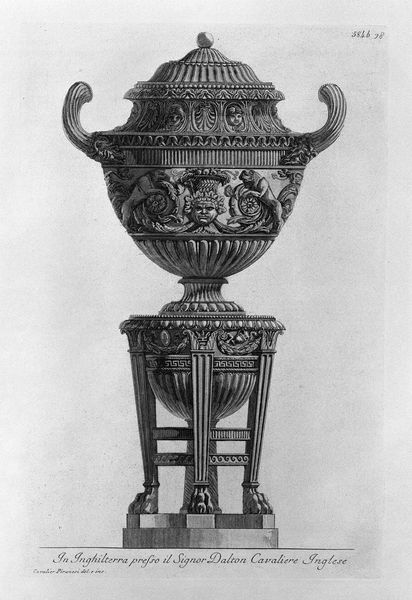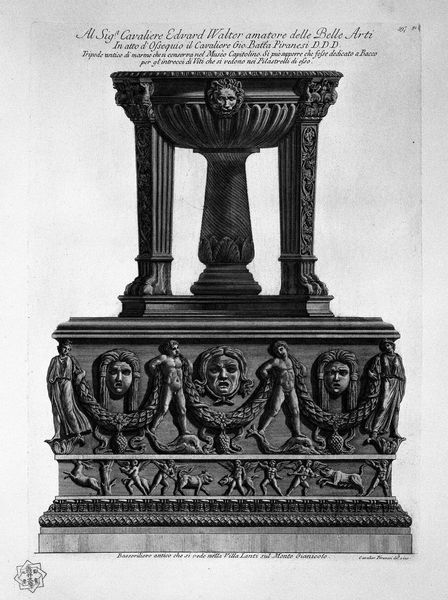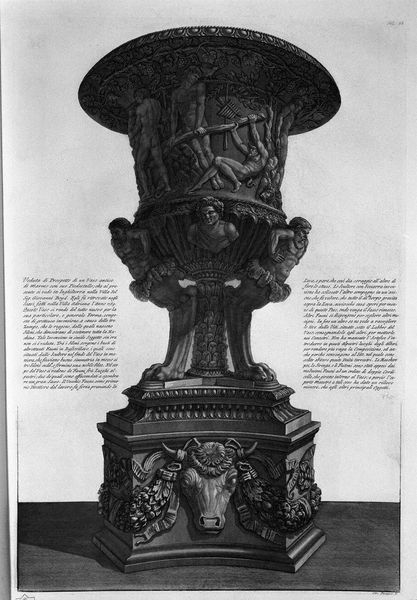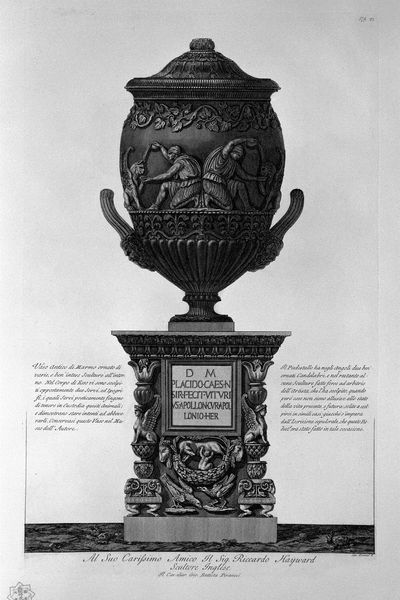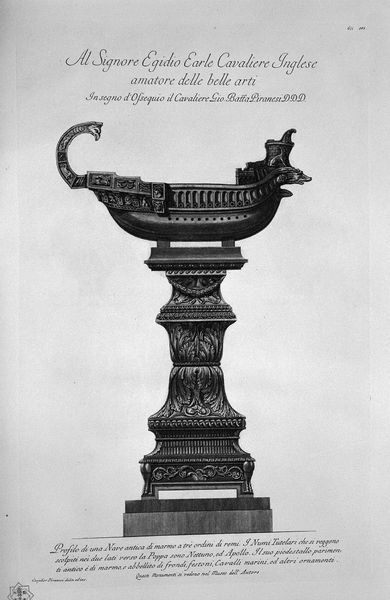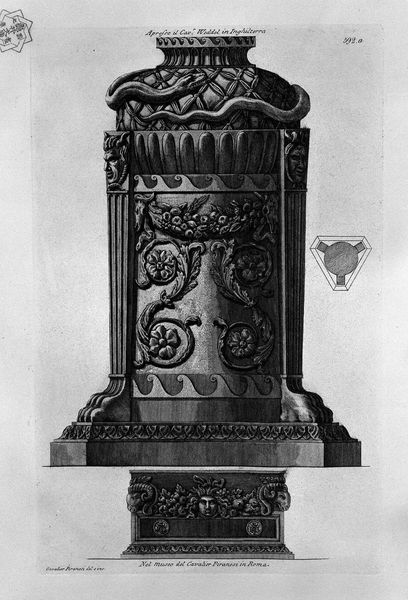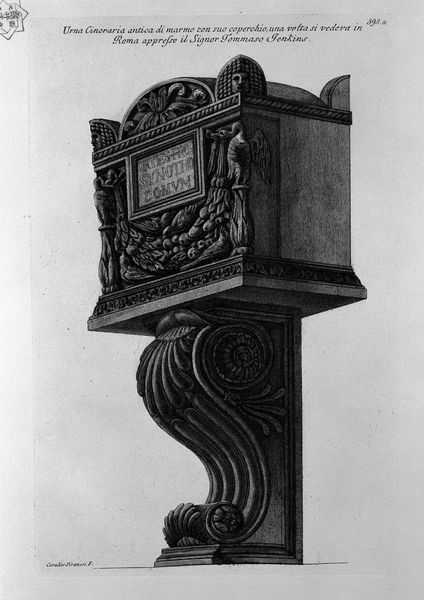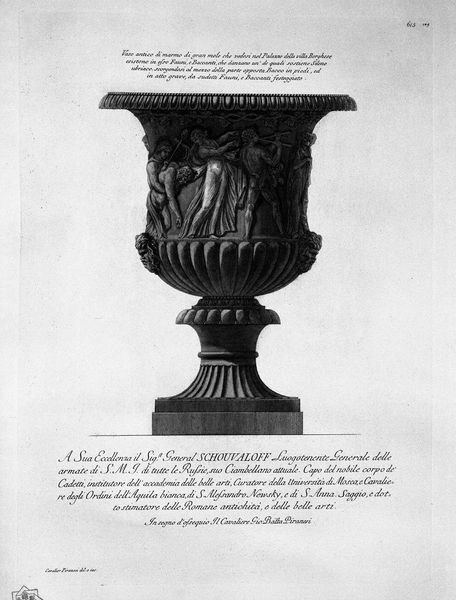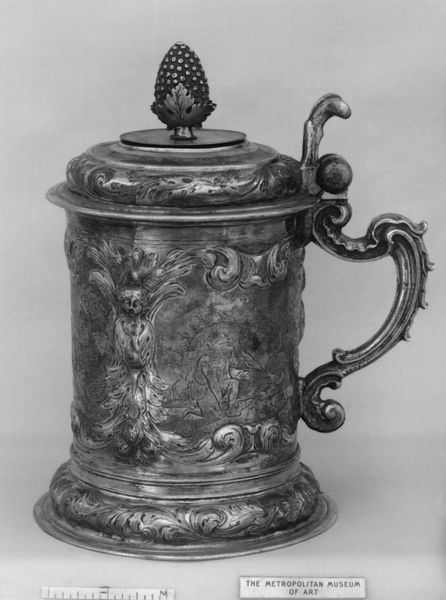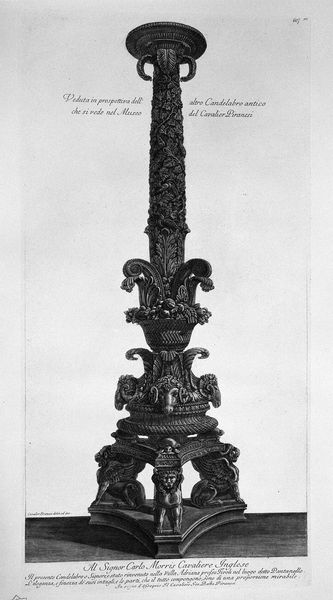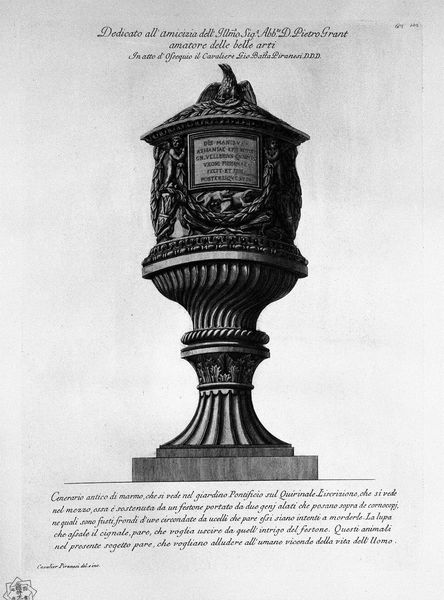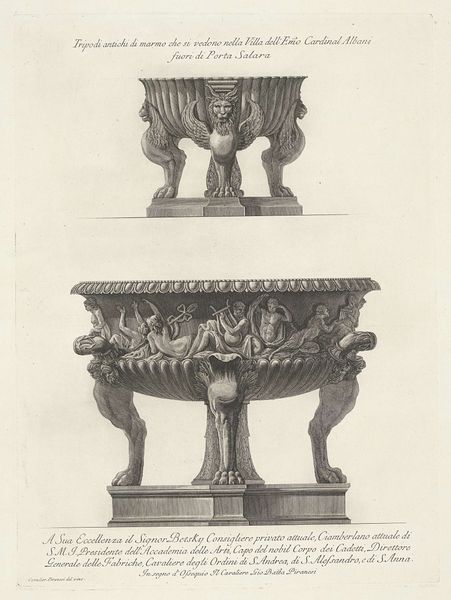
drawing, print, bronze, graphite, marble, engraving
#
drawing
#
neoclacissism
# print
#
sculpture
#
bronze
#
graphite
#
marble
#
graphite
#
engraving
Copyright: Public domain
Curator: Look at this print, what feelings arise in you? Editor: Whoa. It’s brooding, imposing…almost like a mausoleum condensed into tabletop decor. The shadows feel really intense, like a weight pressing down. Curator: I agree! This is Giovanni Battista Piranesi's rendering of an "Antique vase on a marble cinerary urn". This artwork is from his collection of engravings, showcasing ancient Roman artifacts. Though not precisely datable, it certainly situates within Piranesi’s explorations of neoclassicism, rendered here through the combination of graphite, bronze, marble and engraving. Editor: Neoclassical, certainly. That urn screams "refined taste" but, knowing Piranesi, is there more to the story than just fancy antiquity? Curator: Absolutely. He’s interested in the theatre of power that ancient Roman architecture and design evoked. Piranesi wasn’t merely documenting artifacts; he was reimagining the grandeur of Rome and hinting at its decline and rediscovery. Editor: I see it. Those winged lions look regal enough, but the whole structure is layered with garlands of wilting foliage. Is this his not-so-subtle memento mori? Curator: Possibly, it’s certainly part of Piranesi’s perspective. Beyond mortality, think about the political context. Piranesi lived during a period of intense archaeological interest in Rome, but also during significant shifts in European power structures. Editor: Right! The rediscovery of the antique became entangled with nation-building and asserting cultural superiority. So, he's presenting the viewer with this monument, inviting reflection on the cyclical nature of civilizations? Curator: Precisely. The artwork functions as a social and political commentary on Piranesi’s historical context, underlining those concepts within this carefully-made image. It’s not just an urn. It’s a statement. Editor: Looking at it again with all this in mind, it feels much more monumental now. It seems a meditation, both inspiring and somber. Curator: Agreed. Piranesi makes sure we, the viewers, participate in an ongoing dialog with these powerful symbols of the past, not merely appreciating, but reflecting on history and on culture itself.
Comments
No comments
Be the first to comment and join the conversation on the ultimate creative platform.
